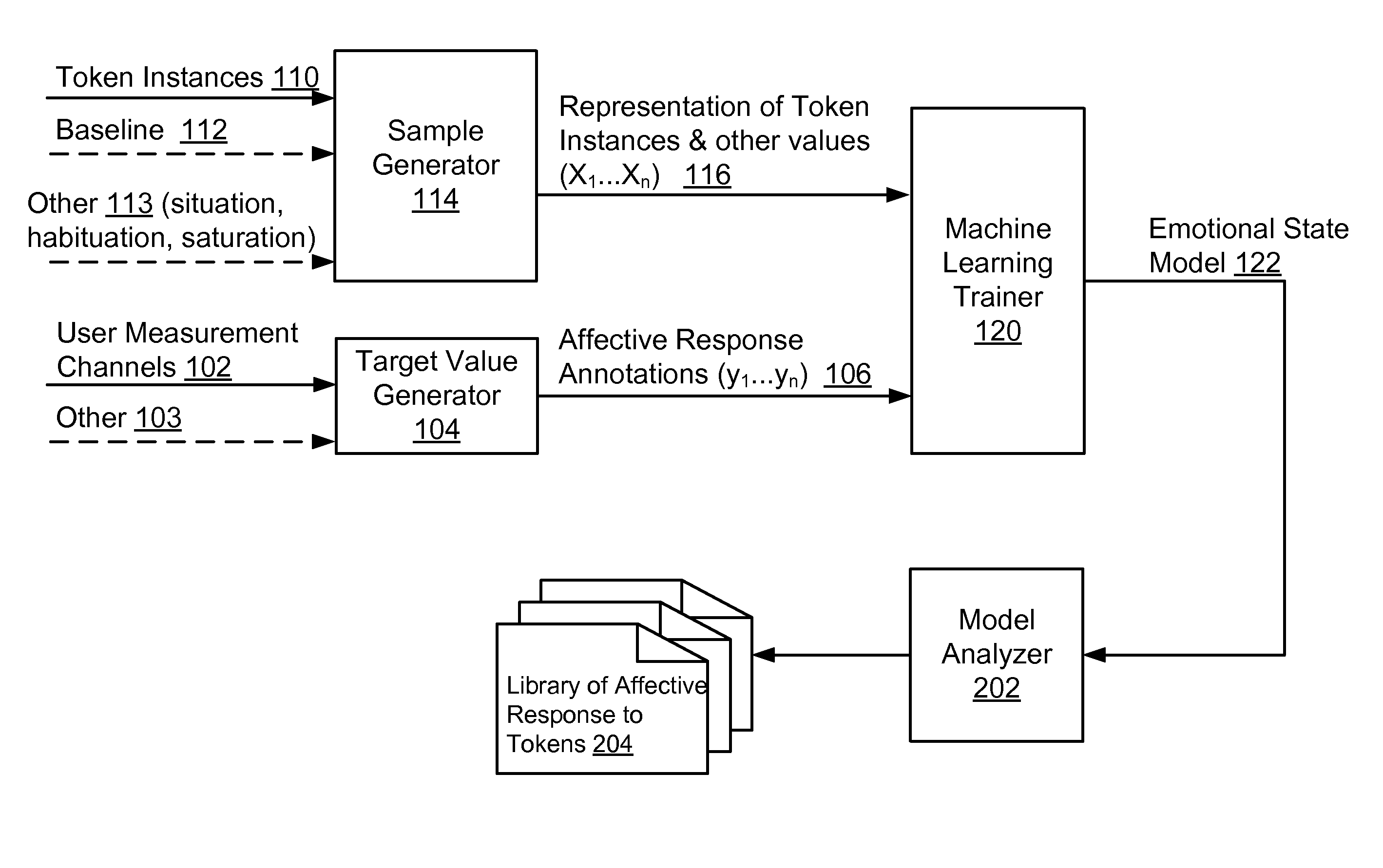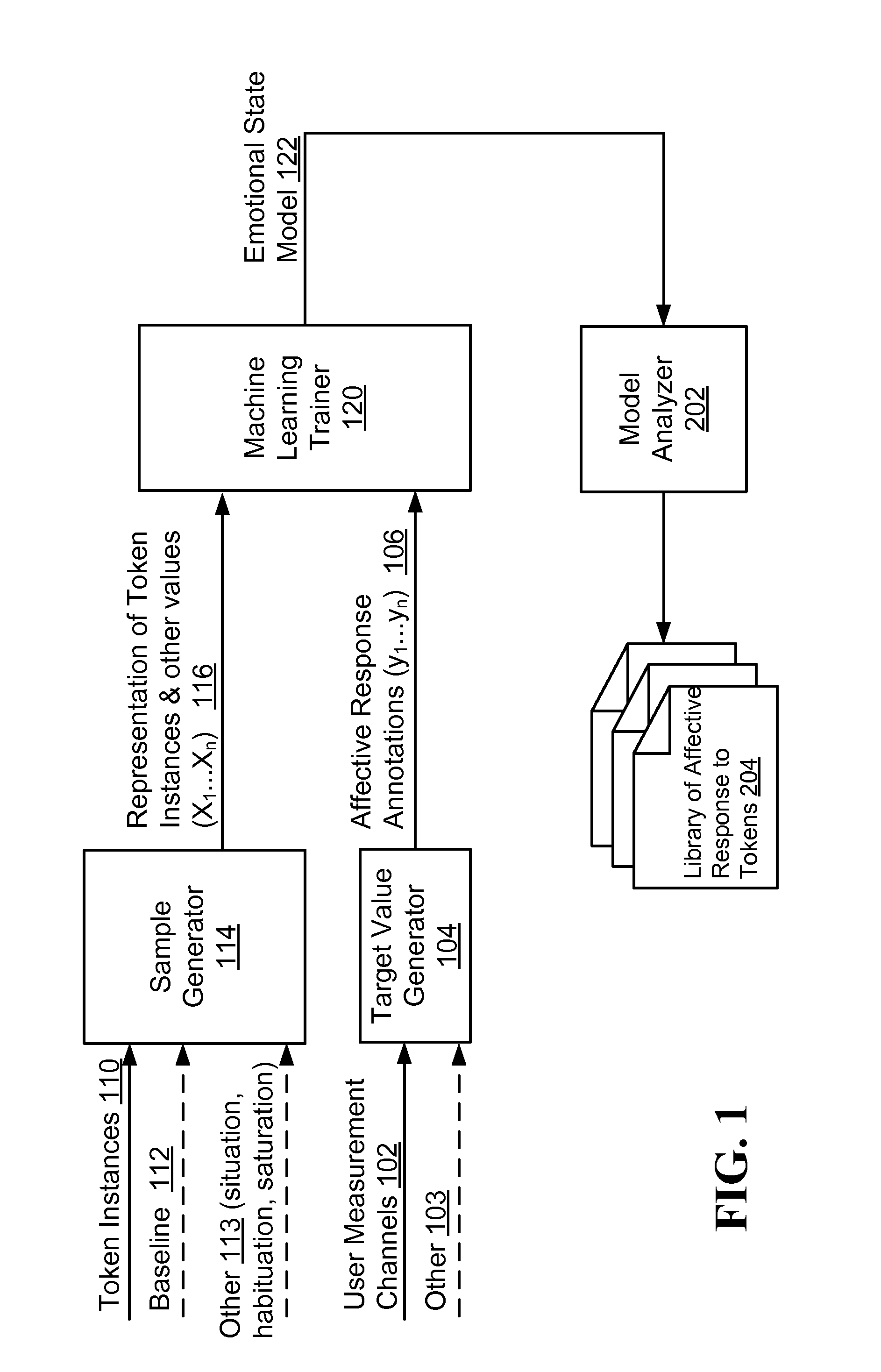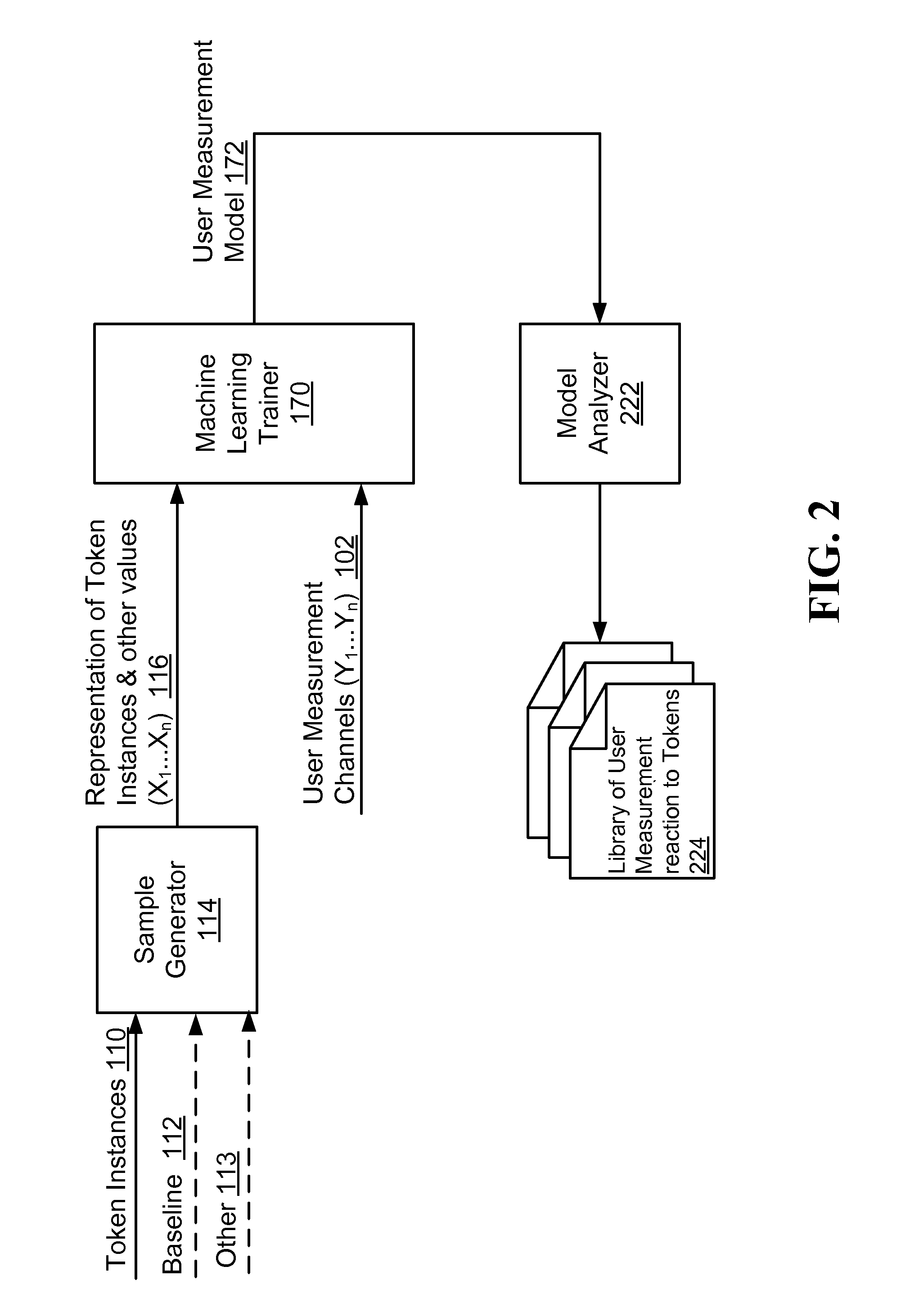Habituation-compensated predictor of affective response
a technology of affective response and compensatory factor, applied in the field of habituation compensating predictor of affective response, can solve the problems of short period, insufficient robustness to handle the demands of real-world applications, and insufficient when it comes to real-world applications, so as to increase the enjoyment of users and not annoy users
- Summary
- Abstract
- Description
- Claims
- Application Information
AI Technical Summary
Benefits of technology
Problems solved by technology
Method used
Image
Examples
Embodiment Construction
[0030]Some of the disclosed embodiments comprise a system that monitors a user over long periods and in different situations to generate a model of the user's affective response. Optionally, there are two main types of inputs to the system: (i) user measurements of various types of modalities, and (ii) a stream of token instances that represent the user's cognitive state and various sensual stimuli to which the user was exposed. The system processes the user measurements to learn a model for estimating the user's affective state. By coupling the affective state estimations for various time points with information on the token instances to which the user was exposed at those times, and applying various machine learning and / or data mining techniques, the system learns an affective response model for the user. Using the machine learning models the system learnt, it may generate one or more of the following outputs: (i) user's model parameters, which describe the user's expected affecti...
PUM
 Login to View More
Login to View More Abstract
Description
Claims
Application Information
 Login to View More
Login to View More - R&D
- Intellectual Property
- Life Sciences
- Materials
- Tech Scout
- Unparalleled Data Quality
- Higher Quality Content
- 60% Fewer Hallucinations
Browse by: Latest US Patents, China's latest patents, Technical Efficacy Thesaurus, Application Domain, Technology Topic, Popular Technical Reports.
© 2025 PatSnap. All rights reserved.Legal|Privacy policy|Modern Slavery Act Transparency Statement|Sitemap|About US| Contact US: help@patsnap.com



